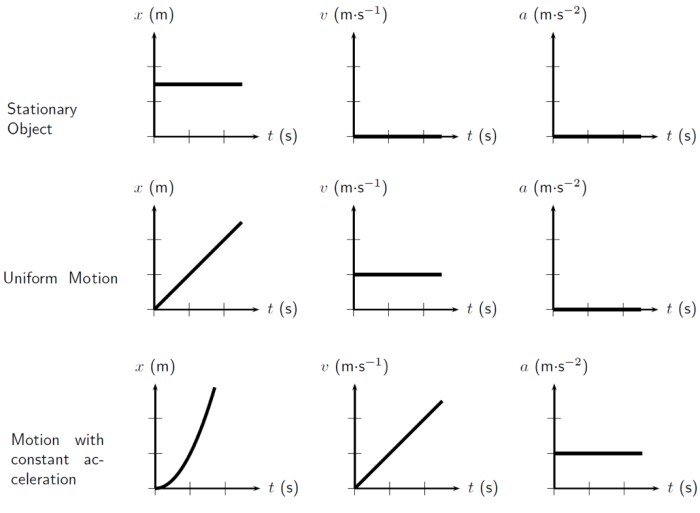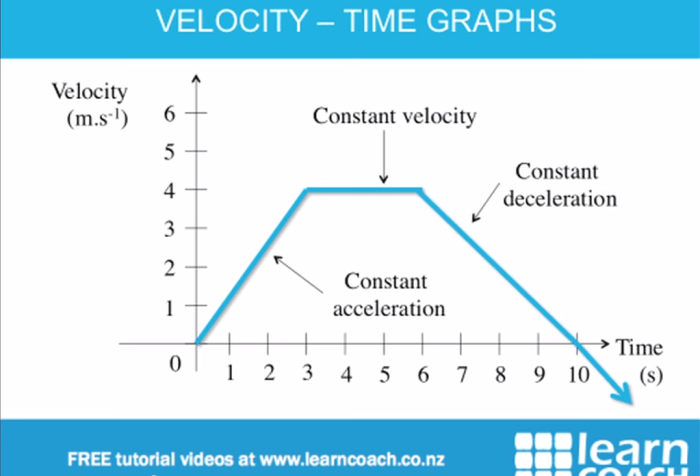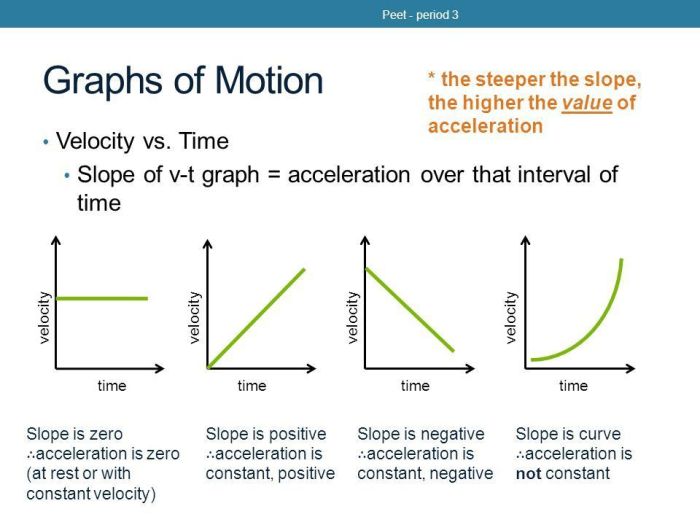Embark on a captivating journey into the realm of motion analysis with gizmo distance-time and velocity-time graphs. These powerful tools provide invaluable insights into the behavior of moving objects, unraveling their intricate dance through space and time.
Distance-time graphs capture the essence of an object’s displacement over time, revealing its trajectory and speed. Velocity-time graphs, on the other hand, delve into the dynamics of motion, showcasing the rate of change in velocity and the underlying forces at play.
Gizmo Distance-Time Graphs

Distance-time graphs are a graphical representation of the distance traveled by an object over time. They are useful for visualizing and analyzing the motion of an object. Distance-time graphs can be used to determine an object’s speed, acceleration, and displacement.
Examples of Distance-Time Graphs for Different Types of Motion
- Constant speed:A straight line with a constant slope.
- Accelerating motion:A curved line that is concave up.
- Decelerating motion:A curved line that is concave down.
Interpreting Distance-Time Graphs to Determine an Object’s Speed, Gizmo distance-time and velocity-time graphs
The slope of a distance-time graph represents the object’s speed. A steeper slope indicates a faster speed.
Gizmo Velocity-Time Graphs

Velocity-time graphs are a graphical representation of the velocity of an object over time. They are useful for visualizing and analyzing the motion of an object. Velocity-time graphs can be used to determine an object’s acceleration, displacement, and the total distance traveled.
Examples of Velocity-Time Graphs for Different Types of Motion
- Constant velocity:A horizontal line.
- Accelerating motion:A line that is sloping upward.
- Decelerating motion:A line that is sloping downward.
Interpreting Velocity-Time Graphs to Determine an Object’s Acceleration
The slope of a velocity-time graph represents the object’s acceleration. A steeper slope indicates a greater acceleration.
Comparing Distance-Time and Velocity-Time Graphs: Gizmo Distance-time And Velocity-time Graphs

Distance-time graphs and velocity-time graphs are both useful for analyzing the motion of an object. However, they provide different information about the object’s motion.
Advantages and Disadvantages of Each Type of Graph
- Distance-time graphs:
- Advantages: Easy to construct, provide a clear picture of the object’s displacement.
- Disadvantages: Do not provide information about the object’s velocity or acceleration.
- Velocity-time graphs:
- Advantages: Provide information about the object’s velocity and acceleration, allow for the calculation of displacement.
- Disadvantages: More difficult to construct, may not provide a clear picture of the object’s displacement.
Using Both Types of Graphs to Analyze Motion
By using both distance-time and velocity-time graphs, it is possible to obtain a complete picture of an object’s motion. Distance-time graphs provide information about the object’s displacement, while velocity-time graphs provide information about the object’s velocity and acceleration.
Applications of Distance-Time and Velocity-Time Graphs

Distance-time and velocity-time graphs are used in a variety of fields, including physics, engineering, and sports.
Real-World Applications
- Physics:Analyzing the motion of objects in free fall, projectile motion, and circular motion.
- Engineering:Designing vehicles, bridges, and other structures.
- Sports:Analyzing the performance of athletes, such as runners, cyclists, and swimmers.
Limitations of Using These Graphs to Analyze Motion
While distance-time and velocity-time graphs are useful tools for analyzing motion, they have some limitations. These graphs assume that the object’s motion is in one dimension and that the acceleration is constant. In reality, objects often move in two or three dimensions and their acceleration may not be constant.
Popular Questions
What is the primary purpose of a distance-time graph?
Distance-time graphs provide a visual representation of an object’s displacement over time, allowing us to determine its speed and identify any changes in its motion.
How can velocity-time graphs be used to calculate acceleration?
Velocity-time graphs depict the rate of change in velocity over time. The slope of the graph at any given point represents the acceleration of the object.
What are the key differences between distance-time and velocity-time graphs?
Distance-time graphs focus on displacement, while velocity-time graphs focus on the rate of change in displacement. Distance-time graphs provide information about an object’s position, while velocity-time graphs provide information about its motion.